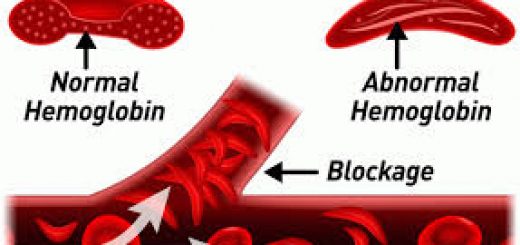Vaso-Occlusive Pain Linked to Menstruation in Some Patients, Study Finds
BY ALICE MELÃO
IN NEWS.
Acute vaso-occlusive pain is associated with the onset of menstruation, and about 25% of the women with sickle cell disease can differentiate these episodes from menstrual-cramp pain, a study found.
Findings in the study, “Acute Vaso-Occlusive Pain is Temporally Associated with the Onset of Menstruation in Women with Sickle Cell Disease,” published in the Journal of Women’s Health, supported “our clinical experience,” its authors concluded.

Vaso-occlusive crisis (VOC) is a hallmark feature of sickle cell disease (SCD), which is characterized by chronic inflammation, and linked to severe pain due to blocked blood vessels. VOCs are the most common cause of emergency room visits and hospitalizations in sickle cell patients. They can severely affect a patient’s quality of life, and sometimes lead to death.
Think you needed to add “and” here between the severe pain due to blocked blood vessels that marks VOC; the chronic inflammation is not part of the blocked vessels]
Sex-specific risk factors associated with VOCs incidence have not been fully explored, although these crises are reported to occur at higher rates in women than men. Previous studies have suggested an association between acute vaso-occlusive pain episodes and the onset of menstruation. However, the results have been inconsistent.
Researchers at Vanderbilt University investigated this link in 103 women diagnosed with sickle cell. The participants were asked to respond to a survey that focused on the incidence of VOCs, and their menstrual cycles.
“Elucidating the potential association between the onset of menstruation and acute vaso-occlusive pain is necessary for the identification of modifiable risk factors and for attenuating disease-related morbidity,” the researchers wrote.
The average age of the women was 25.4 years, and most of them had the hemoglobin SS variant.
Among this group, 39.8% reported one to two episodes of acute vaso-occlusive pain per month, and 24.3% three to four episodes, while 17.5% said they had more than four painful episodes a month. Daily pain was reported by 11.7%.
Twenty-nine of the 103 participants (28.2%) reported acute vaso-occlusive pain that was temporarily associated with menstruation. Approximately 55.2% of these women had these sickle cell-related episodes within seven days before their periods, while 37.9% had them during menstruation.
Three reported acute vaso-occlusive pain associated with menstruation without concurrent dysmenorrhea (painful menstrual cramps), while 39 women had dysmenorrhea without concurrent acute vaso-occlusive pain.
Of those surveyed, 25% reported both painful menstrual cramps and acute vaso-occlusive pain associated with menstruation. This finding indicates that the women can differentiate between the two painful occurrences.
The researchers also found that painful menstrual cramps were associated with acute vaso-occlusive pain episodes. Women with such episodes around or during menstruation were almost nine times more likely to have dysmenorrhea at the same time.
To confirm these findings, the team repeated the survey in another group of 118 women with sickle cell.
In this group, 44.9% reported one to two episodes a month of acute vaso-occlusive pain, and 17.8% said they had three to four episodes. More than four SCD-related pain crises a month occurred in 8.5% of the patients, while 16.1% had pain daily.
Analysis of the participants’ answers found similarities between the two groups regarding the incidence of acute vaso-occlusive pain associated with menstruation, independent of the presence of painful menstrual cramps.
“We have found strong evidence to match our clinical experience that acute vaso-occlusive pain temporally associated with the onset of menstruation occurs in a subset of women with SCD,” the researchers wrote.
“Given the negative impact of recurrent acute vaso-occlusive pain episodes on quality of life, further studies are needed to better define this underrecognized clinical entity.”




Recent Comments